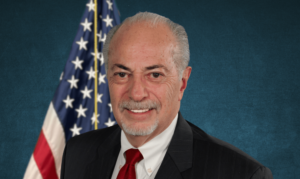[EDITOR’S NOTE: The following is a letter from Fayetteville Councilwoman Kathaleen Brewer.]
Attached is the letter about the investigation I have been doing as to why the schools within the city of Fayetteville are not what they used to be. I presented this material [June 2] at the council meeting and promised I would send the entire thing to you all.
I really believe the general public needs to be aware of this stuff. The audience [June 2] thanked me for having the guts to state what everyone has been suspecting for a long time.
To begin with, I am not trying to dig up dirt. This investigation I am going to explain began from an economic development standpoint as a city council member trying to find the reasons why my city is losing young families and not attracting new ones.
The feedback I received from remaining GenXers and a few millennials, plus comments made by long-time residents made it clear the decline of our schools is a, if not the, major factor. In the past, when the boom was occurring, people were moving here because of our schools.
So what happened? Why are our schools not the same as they were 10-15 years ago? Through an email outreach and talking with citizens, I discovered one common negative denominator was the fact that every school within the city of Fayetteville limits has become a federal Title One School except for Fayette High.
Checking into this, I found this information was correct except for Fayette High, which I found does meet the criteria, but due to the associated bad stigma of being a Title One has not been declared so by the Fayette County Board of Education. I bet you this is the reason why so many within our school zone have requested their kids be transferred to schools located out in the County or in Peachtree City where the schools continue to retain high ratings.
The schools that are now Title One are Bennett’s Mill Middle School, Cleveland Elementary, Fayetteville Elementary, North Fayette Elementary, Robert Burch Elementary [in Tyrone] and Spring Hill Elementary.
I, as many citizens, assumed becoming a Title One was based on test scores or possibly low reading and math levels, so it was a bit of a surprise to find out that is not so. Instead it is based on the number of free and reduced lunches (FRLs) which is overseen by the Department of Agriculture, not the Department of Education.
So the next step for me was to look into how students qualified for free lunches. I found out their parents, parent or guardian had to be making less than the poverty level of income, that being for a family of four. For reduced lunches, they could not make more than $3,677 a month and for free lunches they could not make than $2,584 a month.
I next learned that for a school to qualify for Title One Funding and entitlements, 35 percent of its students must receive reduced or free lunches. In other words, this means 35 percent or more of the families sending their kids to our schools are at or below the poverty level.
Granted, there was the recession and incomes have not risen with inflation, but that 35 percent number still seems way too high, when in fact 48.91 percent of the kids at Bennett’s Mill, 39.41 percent at Cleveland, 42.16 percent at Fayette High, 52.76 percent at Fayette Elementary, 54.96 percent at North Fayette, 56.2 percent at Burch Elementary and 58.97 percent at Spring Hill receive FRLs.
Now I turned to the statistical data on the city of Fayetteville’s website. As of 2015, 11 percent of the city’s households make under $30,000 a year, only that number includes households with and without children. The 2010 census says 6.5 percent of our families are considered at or below the poverty level. As to the rest of the population, 31 percent make from $31,000 a year to $74,000, 41 percent make from $75,000 to $149,000 and 18 percent make over $150,000. These numbers tell us we do not have a majority of impoverished families.
Now let’s look at the total number of students attending the six Title One schools in Fayetteville plus Fayette High. That number is 5,057.
So what is the number of students at these schools who qualified for free and reduced lunches? That number is 2,498.
That means 49.4 percent of the kids attending schools in Fayetteville have families at or below the poverty line. That is close to half of all students which in itself tells us something is way off.
Interestingly, we supposedly have 8,798 school age kids in the city, which means 3,741 of them are not attending public school. So where are they? My guess is their parents have sent them to private schools or are home schooling. Which could be why the enrollment supposedly dropped by 2,500. Not because there are less children, but because their parents don’t want them going to the Title One schools. Granted, it could also be due to religious beliefs or not caring for the public school system in general.
Anyway, obviously something is wrong. So the next step was to find out how the free and reduced lunch applications are verified, checked out.
After speaking with Dr. Joseph Barrow, Superintendent of Fayette County Schools and Ms. Wilkes who is department head for school lunches, I was told the schools follow state and federal guidelines of the National School Lunch Program (NSLP) as to verification.
So what does that mean? It means they cannot ask for verification on more than 3 percent of the applications. What? Who is saying this? I was shocked to find out it was the Department of Agriculture that stated this rule in their manual.
Why is this and how did the NSLP come up with that 3 percent number?
Delving deeper, I found Memo Code SP 29-2016 dated March 9, 2016. The one good thing I found out was there is a push to simplify auto-acceptance of any student whose family already receives TANF, SNAP, etc., because of inner connective software programs and because there is an intense verification process for these programs. I have absolutely no problem with these kids getting free lunches.
But there appears to be a glaring error-in-thinking on the part of the National Student Lunch Program (NSLP) because they are assuming the need for secondary reviews (verification) is due solely to the school’s staff reviewers making mistakes.
I found it shocking that throughout the entire Memo Code SP 29-2016, reference is continually made to the school’s administration making the errors and thus a need for more oversight and proper training of school administrative staff if there is more than 5 percent “secondary verifications.” Secondary verification means follow up on an application. The idea that there could be rampant fraud on the part of the population does not even seem to enter their equation.
It took awhile, but I found Special Nutrition Programs Report No. CN-15-RORA that is Regional Office Review that exams “administration errors incurred during the process of household applications for free and reduced priced meals in the National School Lunch Program.” May 2015. Here they stated more than half of administration errors were due to incomplete applications.
Yet this report also states the level of benefits based on income information provided was 97.3 percent correct. Just the fact there were 97 percent correct incomes on these applications tells you something is wrong, but then again, applicants are given the charts of eligible income ranges with their packets.
So I have deduced the reason for the edict handed down by the U.S. Department of Agriculture to schools that they cannot send out the “ We Must Check Your Application” verification letter SP34-2016a5 to more than 3 percent applicants is based on the above report because it assumed there is only a 3 percent error range on behalf of administrators. They refer to this as the “Sample Range.”
In addition, this Memo Code SP 29-2016 repeatedly spells out that any school reporting 5-10 percent secondary reviews is subject to having to jump through all sorts of hoops and remain under the state and fed’s microscope for the next two years because of the assumption school staff are error prone. I can now see why they don’t bother with secondary reviews.
Going back to the original numbers of kids qualifying for free and reduced lunches, there obviously has to be a lot of crooked parents, but who can blame them? Once word spreads no one checks this application, why not get your kids free meals?
You don’t even have to put down where or who you work for. And you are not required to even submit a W2 unless you receive a “request for verification” form and due to the above, that is not likely. Plus you are provided with the income eligibility chart along with your instructions so that takes the guessing out of the income you need to be eligible or not. Plus you know nobody is going to check how many working adults are actually in your home and that everyone has declared their incomes, not just the one with the lowest paying job. This kind of application is just asking for fraud.
I feel something has to be done, especially when so many important things are dependent on these Free and Reduced Lunches (FRL) numbers. Things like our schools becoming Title One schools is causing college educated parents (59 percent of our city’s population) to pull their kids out and seek education elsewhere — which not only reduces the number of students in the public system, but leaves behind a greater proportion of academically struggling students which in turn bring down the school’s test scores and ratings.
Second is the fact young families and corporate businesses look at the number of Title One schools in an area when deciding if they want to relocate because they are indicative of poverty and crime.
Third, the general public is beginning to suspect there is fraud on the part of the school district in order to get Title One money and extra electronic equipment.
Fourth, anyone writing a grant proposal uses the FRL numbers for providing information on underserved and underprivileged people in our area. This is not a racial issue since there are a lot of very upset black parents who moved here because of the schools and now are either moving away or sending their kids to private schools or home schooling.
By the way, I am still trying to talk directly with directors at the federal Department of Agriculture level and at our state of Georgia Department of Education as to exactly why they won’t allow verification in terms of fraud prevention. Once I get answers, I will publish them.
The only solutions I can come up with is to request (via sticky note) W2s be brought in at the get-go so there won’t be a need for a secondary review. As to choosing a 3 percent “random” sample of applicants to verify, I would think if the address of a student reflects a good to affluent neighborhood, then a social worker should investigate.
Maybe we do need the police to run license plates checks on all the cars dropping off school kids, a suggestion often presented by concerned citizens. (I checked and it is true resident license plates have their county name on them.)
Besides that, if any citizen has evidence of fraud, there should be a phone line for them to report it and staff to handle the calls. I also think if an example was made of someone actually being convicted of fraud and paying a fine or going to jail, a good number of these FRLs (Free and Reduced Lunches) would cease to be.
Only there is one big problem. I cannot find anywhere – not in the state or federal level — who would oversee the process. As of now there is no penalty for a fraudulent application other than that child doesn’t get a free lunch.
As a community, this obvious fraud is hurting us all, especially when we are trying to attract young families and new businesses so as not to economically implode. We all want to see our schools climb back up to the level they were 10 years ago. If the demographics have really changed that much, that fact should be based on true data, not fraud.
I am wide open to any suggestions anyone in-the-know might have to remedy this mess as it seems we are all victims of a severely broken system. Congress should establish clearer guidelines for school districts to investigate suspected fraud and explore alternative income-documentation methods for faster and more reliable data.
Kathaleen Brewer, council member
Fayetteville City Council











Leave a Comment
You must be logged in to post a comment.